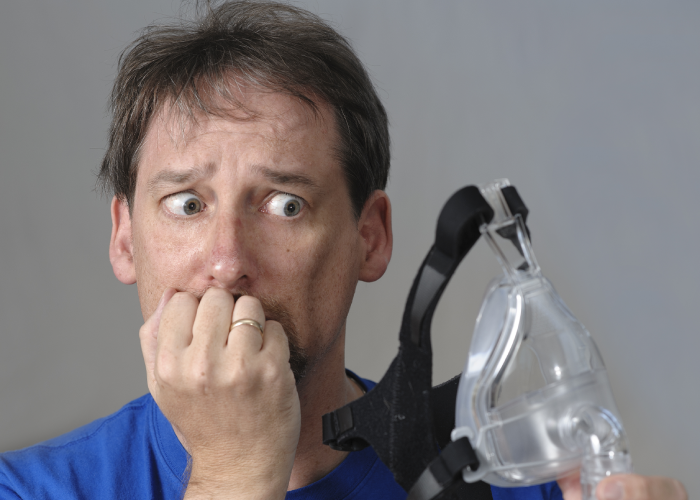Alternative Treatments to PAP & CPAP
If you have been diagnosed with obstructive sleep apnea (OSA), your physician probably recommended a treatment to allow you sleep deeply and awaken refreshed.
Studies have shown that OSA patients who consistently use their treatment feel better and, as a result of reducing their apnea, they also reduce their risk of high blood pressure, diabetes, and other related diseases. The most common treatment is positive airway pressure (PAP), but that is NOT your only option.
Why is Positive Airway Pressure the most commonly used treatment?
Positive Airway Pressure (PAP) machines the most effective treatment of sleep apnea, even for moderate and severe apnea. It is endorsed by the American Academy of Sleep Medicine as first line treatment and is covered by almost all insurance.
Often called CPAP or Auto-CPAP, the machine is connected to a mask, worn snugly over the nose or nose and mouth, during sleep. Pressurized air flows into the sleeper’s throat, and the increased air pressure prevents the sleeper’s airway from collapsing.
However, many people find it hard to tolerate the air pressure or have claustrophobic feelings with the mask and don’t use their treatment regularly if at all.
Alternative gaining popularity: Oral Appliances
Sleep apnea and snoring can also be treated with a dental appliance that opens the airway by bringing the lower jaw slightly forward. The appliance is worn in the mouth during sleep and resembles a mouth guard that an athlete might wear.
You can simulate the effect of an oral appliance with a simple experiment. Pretend you are making a snoring sound, then push your jaw forward. You will see that the snoring sound stops.
Studies have shown Oral appliances are effective in eliminating sleep apnea in many patients, and the American Academy of Sleep Medicine has endorsed oral appliance therapy for patients with mild or moderate sleep apnea.
Many dentists offer Oral Appliance Therapy, and there is even one network of dentists specializing in sleep medicine that is able to bill most medical insurance in-network. Contact Sleep Impressions to see if they have one near you.
Airway Surgery is another common treatment for Adults
Depending on the location of the obstruction in the airway, a surgical procedure can be effective in treating obstructive sleep apnea, and it is often effective in treating snoring.
The challenge for the surgeon is determining what part of the upper airway is causing the obstruction to airflow. There are many possible sites, and conventional sleep testing does not identify the area the surgeon should modify.
If the surgeon does not treat that site in the airway, or if there are multiple sites of obstruction, it is unlikely that the sleep apnea will diminish to a degree that eliminates the need for other treatment.
Given the several sites where airway obstruction may exist, there are many types of surgical procedures currently used to treat sleep apnea, including tonsilectomy, tongue base reduction, and uvulopalatopharyngoplasty (UPPP), to name a few. The most common is UPPP, which has a success rate over 50 percent, and some surgeons have achieved very high success rates using multiple, staged operations.
Airway Stimulation
Airway stimulation therapy works inside your body while you sleep to treat the root cause of sleep apnea and keep your airway open. Inspire Medical Systems has designed a small device placed during an outpatient procedure. Then with a click of the remote at bedtime, you turn on Inspire, and your airway is opened by slightly stimulating the muscles in your airway. This allows you to breathe normally and sleep peacefully. Inspire has been FDA approved to treat OSA since 2014. Learn more at https://www.inspiresleep.com/#how-it-works
Is there anything else that can help?
Positional Therapy can help some people who snore or have sleep apnea only when sleeping on their back. They can eliminate or reduce airway blockage simply by learning to sleep on their side. Positional therapy generally works only in mild cases of OSA, but in more severe cases, it can be combined with CPAP at a lower pressure setting. Call Millennium Sleep Lab and ask about the “Slumber Bump”.
Weight Management can also help. Many studies have shown a link between obstructive sleep apnea and obesity. Sleep apnea worsens with increasing weight due to the reduced upper airway and fatty deposits on the muscles controlling the airway. Inversely, losing weight can reduce the severity of obstructive sleep apnea. It is frequently recommended in conjunction with other treatment, and on a positive note, treating sleep apnea can assist with weight loss through increased energy levels and improved metabolism.
If you have been diagnosed with sleep apnea but have been putting starting or using treatment, find a treatment option that works for you. The longer you wait, the more likely you are to develop other health issues! Get started by reading more about all your options.
